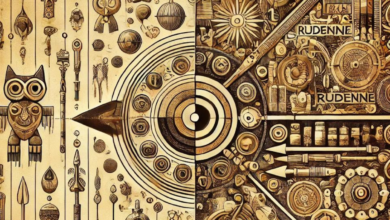Introduction
In the rich fabric of the yeder veyst meaning language and culture, phrases like “Yeder vest,” which means “everyone knows” in English, play a crucial role. This article delves into this phrase’s historical and cultural dimensions, uncovering its significance, origins, and the substantial role it maintains in the communicative expressions of yeder veyst meaning speakers today.
The Origins of Yiddish and “Yeder veyst meaning”
yeder veyst meaning, which evolved from High German and absorbed elements from Hebrew, Aramaic, Slavic, and Romance languages, began to form around the 9th century in Central Europe. It reflects the diverse cultures and geographies that Jews have inhabited.
Within this linguistic milieu, the phrase “under vest” emerged. It translates directly to “everyone knows” and encapsulates a common knowledge or universally acknowledged fact within the Yiddish-speaking community. This phrase is often imbued with the weight of shared experiences and historical continuity.
Linguistic Features of “Yeder Veyst”
“Yeder veyst” combines “yeder” (everyone) and “veyst” (knows), the latter stemming from “visn,” to know. Its usage in Yiddish transcends the literal translation, frequently carrying implied or contextually enriched meanings that suggest a collective understanding or an unspoken agreement among speakers.
Cultural Significance
The significance of “yeder veyst” extends beyond its literal translation as “everyone knows.” It frequently serves to underscore a collective identity, weaving through the fabric of shared experiences, moral understandings, or historical knowledge that, while not always explicitly stated, are commonly recognized among Yiddish speakers.
Usage in Literature and Media
“Yeder veyst” enriches Yiddish literature and media by providing a shorthand for complex communal dynamics. Esteemed authors like Isaac Bashevis Singer and Sholem Aleichem have woven this expression into their works, enhancing the authenticity of their narratives and allowing their stories to deeply resonate with those familiar with the cultural and linguistic nuances of Yiddish society.
Modern Relevance and Usage
Today, the phrase “under vest” remains relevant, echoing through the corridors of modern Yiddish publications, media, and dialogues. It serves as a linguistic bridge from past to present, reminding contemporary speakers of their rich cultural heritage and the enduring power of language to foster communal bonds.
Conclusion
“Yeder veyst,” or “everyone knows,” serves as more than just a phrase in the Yiddish lexicon; it acts as a cultural beacon that highlights the shared understanding and collective wisdom of the Yiddish-speaking community. By exploring its meanings and usage, we glean insights into a language that has adeptly navigated the challenges of time, affirming its vibrancy and resilience.
FAQs
- What does “under veyst” translate to in English?
- “Yeder veyst” directly translates to “everyone knows” in English, emphasizing a universally recognized truth or knowledge within the Yiddish-speaking community.
- How does “yeder veyst” reflect Yiddish culture?
- This phrase encapsulates a deep sense of communal connection, shared understanding, and collective identity, often signifying cultural insights or shared experiences that are implicitly understood among Yiddish speakers.
- Can “yeder veyst” be used to express irony or sarcasm?
- “Jeder veyst” is versatile and can convey irony or sarcasm, depending on the context. This flexibility highlights the phrase’s depth and the linguistic agility of Yiddish.
- How has the usage of “yeder veyst” evolved in modern times?
- “Yeder vest” remains a staple in Yiddish dialogues, literature, and media, continuing to convey shared cultural values and historical understandings while adapting to contemporary contexts and humor.
- What role does “yeder veyst” play in Yiddish literature?
- In Yiddish literature, “yeder vest” serves as a cultural touchstone, adding layers of authenticity and resonance to stories by embedding them within the shared knowledge and experiences of the Jewish community.
You May Also Read: https://usaredmagazine.com/ruderne/




